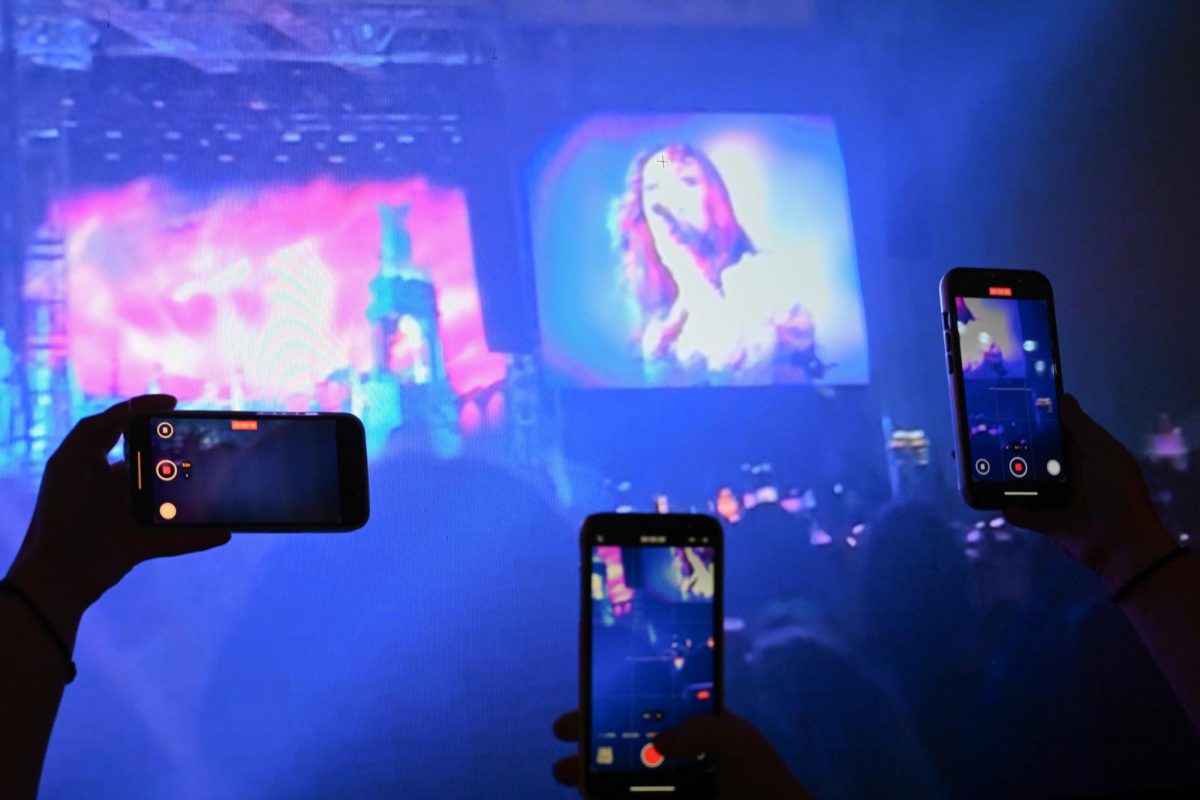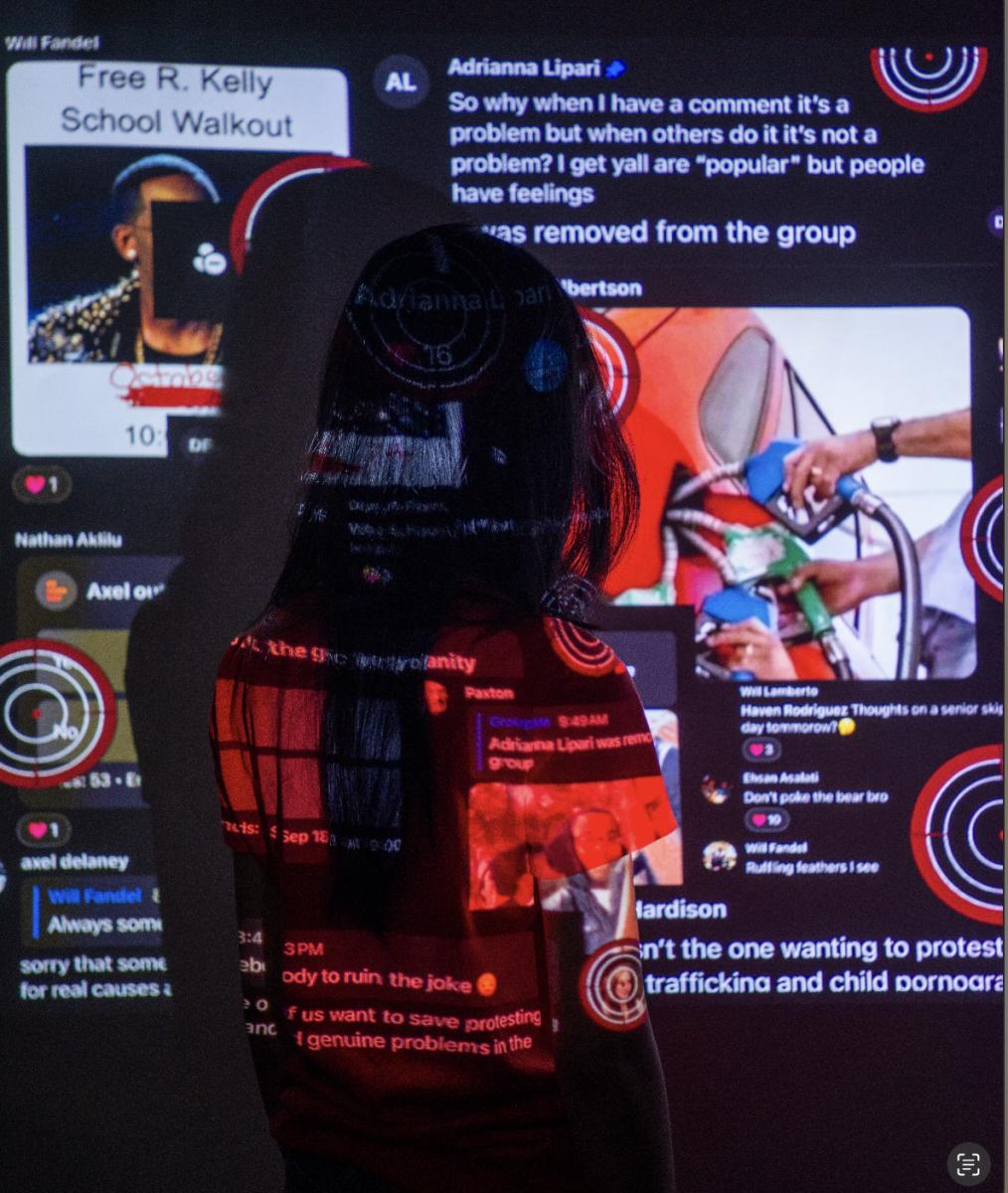In a crowd full of people, you wrench your neck upwards. You’ve been camping out in the heat with your feet aching from standing around, waiting for Chappell Roan to come out. Kansas City is one of three cities she has decided to come to for her “Visions of Damsels and Other Dangerous Things” pop up tour. As Chappell Roan sings “Super Graphic Ultra Modern Girl”, phones light up the sky. Your head weaves back and forth looking for a window to see the actual stage instead of the stage through someone’s phone. But there is no luck finding the actual stage.
It’s the only way you’ll be able to see. Whether you’re on the floor for general admission or in the nosebleeds. Whether you’re in a small downtown theater or at the T-Mobile Center. The only way to see is through someone else’s phone.
Thousands of phones all mirroring the same image become the “DVD loading screen,” all trying to follow the lead singer around. The image dizzies you, and your sticky neck starts to hurt as much as your feet.
A couple of hundred dollars later.
“You’re looking at the stage and there’s 20 phones between you and the stage,” Grace Chalfie. Not only is it interfering with the views of the people around you, but it’s also interfering with your view.
“It takes away from the actual concert experience,” junior Aidan Benlon said. The disconnect is palpable. The concertgoers aren’t there for the performer anymore. They are there for the videos that will soon sit dormant in their Instagram archives because they’re embarrassed they posted a video of themselves singing so loudly in the background and the photos they took that they’ll soon have to delete because they’re out of storage in their Google Photos.
“You’re never going to look back on your videos and be like, ‘Oh! I forgot about that happening, and now that’s one of my core memories.’ Your core memories are going to happen when you’re actually experiencing the concert,” Chalfie said.
By the second half of the concert, the person in front of you isn’t paying any mind that they’re still holding their phone up. With all of the movement from the lights and the band onstage, nothing in the video is in focus, and now, neither are you.
“I get to enjoy the concert more when I’m not seeing it through my phone because if I was just going to do that then I could just go on YouTube and watch it, ” Junior Luke Taylor said.
In order to combat this problem of phones, many artists have started banning
phones at concerts through making concertgoers place their phones in a ‘Phone Locker’ or ‘Yondr pouch’.
Phone Locker, a popular lockable phone pouch company used by concert venues, says that “we’re entering a new era of connected disconnection, where presence is given priority.”
Big names such as Bruno Mars have preached for many years about how harmful phones are in a performance/crowd setting, with Bruno Mars himself even putting into place a no phones policy at his concerts.
This practice, though it may be costly to the venues, is changing concerts for the better.
“I think concerts with a no phone policy are normally more fun because people are more engaged,” Benlon said.
Even though phones are distracting to concertgoers and the performers, there is some benefit.
“I think there definitely is a benefit with having your phone because when you’re waiting for an artist, it’s like, well, what else are we supposed to be doing,” Taylor said.
Phones also allow for promotion of artists as well. By posting videos on TikTok of lesser known opening acts, this can drive popularity towards those artists. Chappell Roan opened for Olivia Rodrigo on her “Guts” tour, which allowed her to gain popularity through TikToks being posted of her performance.
For now, the question remains whether more artists will push for a phone-free concert experience or keep concerts the way they are for now.



